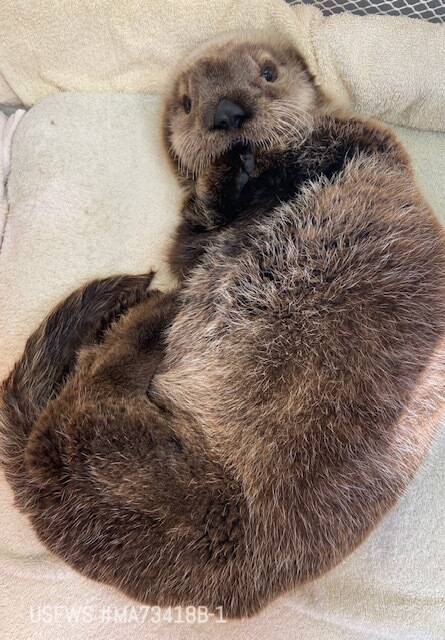A male sea otter pup was admitted to the Alaska SeaLife Center’s Wildlife Response Program on Sept. 27 after being spotted on a beach near Kasilof, where no other otters could be seen. The otter pup, the second to be admitted to the center’s Wildlife Response Program in 2021, was determined to be stranded by the team who responded.
The otter pup was found in “poor body condition,” indicated by “prominent” hip bones and a spine and a “lethargic body demeanor,” and was transported to the SeaLife Center after receiving approval from the U.S. Fish and Wildlife Service.
Upon arrival at the center, the otter pup was determined to be malnourished and dehydrated. The pup was initially predicted to be about 2 months old because of his weight, however, staff later learned he was closer to 4 months old, Director of Animal Health Dr. Carrie Goertz said in a release from the center.
The pup’s actual age was determined after the center learned his food preferences and saw his transitioning coat, though Goertz, who likened the pup to “a furry bag of bones,” noted otters similar in age generally weigh between 15 and 24 pounds.
Because otters have a sensitive gastrointestinal tract, the SeaLife Center team rehydrates and boosts the caloric intake on a daily basis, the center said.
“While it is critical for him to gain weight, it has to be a slow process,” the release says.
According to the center, sea otters must eat 25% of their body weight per day to maintain their body weight.
In the wild, northern sea otters face the biggest threats from predation, overharvest, fishery interactions, disease and oil spills, according to the SeaLife Center. They’re found mostly in shallow coastal waters and rarely come ashore, with about 90% of the world’s sea otters living in Alaska’s coastal waters.
More information on the Alaska SeaLife Center and on northern sea otters can be found at alaskasealife.org.
Reach reporter Ashlyn O’Hara at ashlyn.ohara@peninsulaclarion.com.

